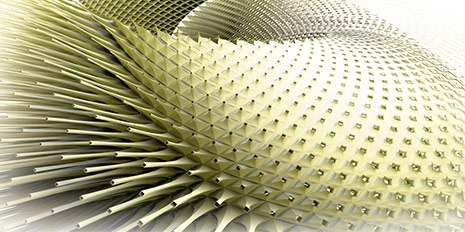
Paradigm shift is a yearly event for architects and like-minded people looking for cutting edge technology and forward thinking industry leaders. Oh and fine food and wine, thank you Mills reef.
This year's keynote speaker was John Klein and according to the event he is "just right guy with just the right amount of technical understanding underpinned by crazy ambitions and strange and wonderful projects". John Klein is an charismatic architect, with strong roots in computational design, experimentation and manufacturing techniques.
In the most recent years he has focussed on creating "energy positive buildings", buildings that generate more energy than they consume. He hopes that this shift will help society be more resourceful in the energy they create and consume.
John's keynote speech took us on a journey of his career at Zaha Hadid, MIT Media Lab and finally his own practise in Massachusetts.
The impressive body of work produced during his time at Zaha Hadid underlines his computational and collaborative way of thinking. If you are familiar with the average Hadid building, you will understand the complexity at hand. This highly expressive, fluid type of architecture requires an immense effort in experimenting with computer modelling and high end manufacturing techniques. These cutting edge technologies are not always in line with the practical realities at the construction site, especially in developing countries. John found that the best way to overcome this is to collaborate with the people on the ground to create solutions that match their technical abilities without compromising end result.
Collaboration is also the backbone of the MIT Media Lab, where talented people within different disciplines come together to push the boundary of technology through design, science and art. It was here where John and his team achieved 3D printing optically transparent glass called G3DP. Quite a challenge if you consider the extreme circumstances under which glass is moulded and shaped. The end result is mesmerizing. It sure is a sign of the times and the rise of 3D (and 4D!) printing possibilities even though this might not be a fully scalable production method.
John also discussed his recent work and belief in our collective responsibility to make an energy shift. A shift in how we think about energy, how we harvest it and how we use it. To John, this is one of the most complicated issues facing the built environment. He and his studio aim to challenge the existing ways of building at the intersection of design, engineering and science. By looking at architecture as energy intelligent systems, we can create sustainable energy positive building and environments. By looking at lifecycle, assembly, disassembly, renewably energy sources, this data helps inform us on where buildings are most likely to succeed.
Architecture has a long way to go, but mind-set's are changing as our society is becoming more excepting of the challenging realities at hand. The car industry gives us a glimpse of hope. With companies like Tesla on the rise and industries rapidly growing in its slipstream, we might be able to reach that much needed tipping point. It appears that regulatory bodies and governments are only ready to commit to change when the business models are proven, and companies driving this change have a huge following, such as Tesla.
It looks like we can do with a few more Elon Musk's in this world. People with wild ambitions and extraordinary drive to break open stale industries and excite us with the possibilities. We also need more people like John Klein to and make our future and our architecture a bit more sustainable.
PS. In case you would like to know more about Elon Musk and his plans to change our world, I highly recommend reading the Elon Musk series written by Tim Urban on his fantastic blog, Wait but Why.
Comments
Post new comment